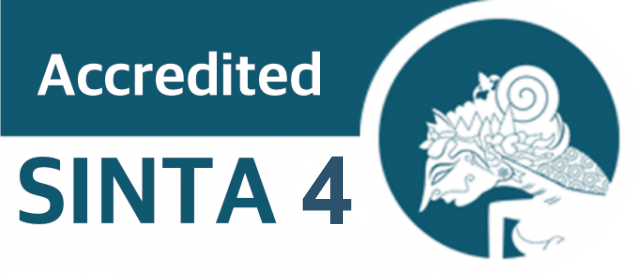Development of STEAM-Based Assessment Instrument for Creative Thinking on Static Fluid Material
DOI:
10.29303/jpm.v20i2.8615Published:
2025-03-24Issue:
Vol. 20 No. 2 (2025)Keywords:
Borg and Gall Development Model; Creative Thinking; Instrument; Static Fluid; STEAM ApproachArticles
Downloads
How to Cite
Downloads
Metrics
Abstract
21st-century learning emphasises the importance of creative thinking skills through the STEAM approach, including developing STEAM-based learning models and tools. This study aims to develop a STEAM-integrated assessment instrument to measure students' creative thinking skills, as well as to determine students’ perceptions of the assessment instrument. The research and development (R&D) method produces effective and efficient educational products through improvement, development, and evaluation. The research was conducted at SMAN 1 Jambi City and SMA Adhyaksa 1 Jambi City, involving 40 students in class XI. The instrument was developed in the form of description questions on static fluid material. The results showed that students' perception was very positive, with an average assessment of 83.15% for the category ‘Very Feasible’. Validation consists of 3 aspects, namely material, language, and evaluation aspects, which show most aspects of the instrument are in the ‘very feasible’ to ‘feasible’ category. Nine of the 11 questions tested were declared valid, while 2 needed revision. The difficulty level of the questions varied from ‘moderate’ to ‘difficult’. These findings indicate that the instrument developed is feasible for measuring students' creative thinking skills in static fluid material with the STEAM approach. The novelty of this research lies in integrating STEAM components into assessment instruments that assess concept understanding and encourage the development of students' creativity.
References
R. H. Mardhiyah, A. N. Sekar, F. Chitta, and M. R. Zulfikar, “Pentingnya Keterampilan Belajar di Abad 21 sebagai Tuntutan dalam Pengembangan Sumber Daya Manusia,” J. Pendidika, vol. 12, no. 1, pp. 29–40, 2021.
A. Agusniatih and S. M. R., “Implementasi Pembelajaran STEAM melalui Kegiatan Fun Cooking Sebagai Pembelajaran Abad 21,” J. Obs. J. Pendidik. Anak Usia Dini, vol. 6, no. 6, pp. 6502–6512, 2022, doi: 10.31004/obsesi.v6i6.3418.
N. A. B. Rahman, I. N. Atika, and A. M. Munip, “Pendekatan Steam Pada Pembelajaran Fisika Untuk Sekolah Inklusi,” J. Ilm. Pendidik. Dasar, vol. 08, no. 3, pp. 4891–4902, 2023.
Darmadi, Budiono, and M. Rifai, “Pembelajaran STEAM Sebagai Pembelajaran Inovatif,” J. Multidisiplin Madani, vol. 2, no. 8, pp. 3469–3474, 2022, doi: 10.55927/mudima.v2i8.924.
C. A. Pudjiastuti, F. Roshayanti, E. Rita, and S. Dewi, “Potensi Implementasi Steam ( Science , Technology , Engineering , Art , Mathematics ) Pada Pembelajaran,” J. Pendidik. dan pembelajaran, vol. 6, no. 1, pp. 55–64, 2024.
W. R. S. P. Mulder, N. Khoiri, and M. S. Hayat, “Validitas media pembelajaran IPA berbasis web dengan pendekatan STEAM untuk meningkatkan kemampuan berpikir kreatif peserta didik,” Pract. Sci. Teach. J. J. Prakt. Pendidik., vol. 2, no. 1, pp. 11–17, 2023, doi: 10.58362/hafecspost.v2i1.31.
A. S. Putri, Z. K. Prasetyo, L. A. Purwastuti, and A. Kolonial, “Effectiveness of STEAM-based blended learning on students ’ critical and creative thinking skills,” Int. J. Eval. Res. Educ., vol. 12, no. 1, pp. 44–52, 2023, doi: 10.11591/ijere.v12i1.22506.
T. Y. E. Siswono, A. H. Rosyidi, A. W. Kohar, K. Hartono, S., Nisa, and G. Uripno, Integrasi Teknologi dalam Pembelajaran Matematika Upaya Meningkatkan Kemampuan Berpikir Kreatif Matematis Siswa. Lampung: Literasi Nusantara Abad, 2022.
Y. E. Wardani and S. Suripah, “Kemampuan Berpikir Kreatif Matematis Siswa SMA Berdasarkan Kemampuan Akademik,” J. Cendekia J. Pendidik. Mat., vol. 7, no. 3, pp. 3039–3052, 2023, doi: 10.31004/cendekia.v7i3.2338.
I. I. Adiilah and Y. D. Haryanti, “Pengaruh Model Problem Based Learning Terhadap Kemampuan Berpikir Kreatif Siswa pada Pembelajaran IPA,” Papanda J. Math. Sci. Res., vol. 2, no. 1, pp. 49–56, 2023, doi: 10.56916/pjmsr.v2i1.306.
N. Meureubo, “Analisis Kemampuan Berfikir Kreatif Siswa Melalui Pendekatan Pembelajaran Science, Technology, Engineering And Mathematics (Stem) Di Sma Negeri 1 Meureubo,” J. Ilm. Pendidik., vol. 3, no. 2, pp. 194–204, 2022.
N. Zaenab, L. Herayanti, and B. A. Sukroyanti, “Pengaruh Model Pembelajaran Kooperatif Tipe Investigasi Kelompok Dalam Pembelajaran Fisika Terhadap Kemampuan Berpikir Kreatif Siswa,” Indones. J. Teach. Educ., vol. 3, no. 1, pp. 374–383, 2022.
W. P. Sari, H. Sahidu, and A. Harjono, “Efektivitas Perangkat Pembelajaran Fisika Berbasis Discovery berbantuan Simulasi PhET untuk Meningkatkan Keterampilan Berpikir Kreatif Peserta Didik,” J. Ilm. Profesi Pendidik., vol. 7, no. 2c, pp. 995–1000, 2022, doi: 10.29303/jipp.v7i2c.437.
A. Kurniawan, “Pembelajaran Fisika Menggunakan Pendekatan Konseptual Interaktif dengan Setting Investigasi Kelompok Pada Materi Pokok Fluida Statis,” Meretas J. Ilmu Pendidik., vol. 10, no. 1, pp. 1–11, 2023,
A. Maulana, “Analisis Validtas, Reliabilitas, dan Kelayakan Instrumen Penilaian Rasa Percaya Diri Siswa,” J. Kualita Pendidik., vol. 3, no. 3, pp. 133–139, 2022, doi: 10.51651/jkp.v3i3.331.
A. H. Mandolang, J. C. Rende, and A. Dilapanga, “Pengembangan Instrumen Penilaian Unjuk Kerja dalam Kegiatan Praktikum pada Pokok Bahasan Fluida Dinamis Kelas XI SMA,” Charm Sains J. Pendidik. Fis., vol. 3, no. 1, pp. 15–18, 2022, doi: 10.53682/charmsains.v3i1.145.
Y. Mulyono, Suranto, S. Yamtinah, and Sarwanto, “Development of Critical and Creative Thinking Skills Instruments Based on Environmental Socio-Scientific Issues,” Int. J. Instr., vol. 16, no. 3, pp. 691–710, 2023, doi: 10.29333/iji.2023.16337a.
F. Fatayah, I. F. Yuliana, and L. Muf’idah, “Analisis Validitas Dan Reliabilitas Dalam Mendukung Ketuntasan Belajar Model STEM,” J. Buana Pendidik., vol. 18, no. 1, pp. 49–60, 2022.
D. Udayani, I. Candiasa, and I. Wibawa, “Pengembangan Instrumen Higher Order Thinking Skills (Hots) Pada Tema 7 Indahnya Keragaman Di Negeriku Subtema 1 Sd Kelas Iv,” PENDASI J. Pendidik. Dasar Indones., vol. 6, no. 2, pp. 121–132, 2022, doi: 10.23887/jurnal_pendas.v6i2.1369.
H. Putri, D. Susiani, N. S. Wandani, and F. A. Putri, “Instrumen Penilaian Hasil Pembelajaran Kognitif pada Tes Uraian dan Tes Objektif,” J. Papeda J. Publ. Pendidik. Dasar, vol. 4, no. 2, pp. 139–148, 2022, doi: 10.36232/jurnalpendidikandasar.v4i2.2649.
A. Fadhlilah, U. Rosidin, and Handoko, “Development of AssessmentInstrument for Steam-Based Thematic Learning to Measure the Critical andCreative Thinking Skills of Students in Elementary Schools,” Int. J. Soc. Sci. World, vol. 4, no. 2, pp. 267–274, 2022, [Online]. Available: https://doi.org/10.5281/zenodo.7410339
S. Wanto et al., “Kupas Tuntas Penelitian Pengembangan Model Borg & Gall,” Wahana Dedik. J. PkM Ilmu Kependidikan, vol. 3, no. 1, p. 46, 2020, doi: 10.31851/dedikasi.v3i1.5340.
A. Wicaksono, Metodologi Penelitian Pendidikan. Yogyakarta: Garudhawaca, 2022.
D. D. Chrisyarani, “Pengembangan Instrumen Validasi Media Boneka Tangan dengan Metode Bercerita,” ELSE (Elementary Sch. Educ. Journal) J. Pendidik. dan Pembelajaran Sekol. Dasar, vol. 2, no. 1, pp. 40–50, 2018, doi: 10.30651/else.v2i1.1204.
L. O. Asmin, Fatmawati, and L. Isa, “Analisis Kesulitan dan Dampak Perkuliahan Online Mahasiswa Tadris Fisika IAIN Kendari,” J. Pendidik. Fis. Undiksha, vol. 12, no. 1, pp. 134–141, 2022.
F. R. Azahrah, R. Afrinaldi, and Fahrudin, “Keterlaksanaan Pembelajaran Bola Voli Secara Daring Pada SMA Kelas X Se- Kecamatan Majalaya,” J. Ilm. Wahana Pendidik., vol. 7, no. 4, pp. 531–538, 2021, doi: 10.5281/zenodo.5209565.
S. Arikunto, “Dasar-dasar Evaluasi Pendidikan Edisi 3,” Pt. Bumi Aksara. Bumi Aksara, Jakarta, pp. 0–333, 2018.
F. Yusup, “Uji Validitas dan Reliabilitas Instrumen Penilitian Kuantitatif,” Jurnl Tarb. J. Ilm. Kependidikan, vol. 7, no. 1, pp. 17–23, 2018.
I. A. Yandnyawati, Evalusi Pembeljaran. Denpasar: UNHI, 2019.
M. I. Harisuddin, Secuilesensi Berpikir Kreatif & Motivasi Belajar Siswa. Bandung: PT.Panca Terra Firman, 2019.
P. Armandita, “Analisis Kemampuan Berpikir Kreatif Pembelajaran Fisika Di Kelas Xi Mia 3 Sma Negeri 11 Kota Jambi Analysis the Creative Thinking Skill of Physics Learning in Class Xi Mia 3 Sman 11 Jambi City,” J. Penelit. Ilmu Pendidik., vol. 10, no. 2, p. 129, 2017, doi: 10.21831/jpipfip.v10i2.17906.
Nasrah, R. H. Amir, and Y. Purwanti, “Https://Doi.Org/10.30651/Else.V2i1.1204 Efektivitas Model Pembelajaran Steam (Science, Technology, Engineering, Art, And Mathematics) Pada Siswa Kelas IV SD,” JKPD (Jurnal Kaji. Pendidik. Dasar), vol. 6, no. 1, pp. 1–13, 2019.
Author Biographies
Dian Pertiwi Rasmi, Physics Education, Faculty of Teacher Training and Education, Jambi University
Menza Hendri, Physics Education, Faculty of Teacher Training and Education, Jambi University
Akrom Mardatila, Physics Education, Faculty of Teacher Training and Education, Jambi University
License
Copyright (c) 2025 Dian Pertiwi Rasmi, Menza Hendri, Akrom Mardatila

This work is licensed under a Creative Commons Attribution 4.0 International License.
The following terms apply to authors who publish in this journal:
1. Authors retain copyright and grant the journal first publication rights, with the work simultaneously licensed under a Creative Commons Attribution License 4.0 International License (CC-BY License) that allows others to share the work with an acknowledgment of the work's authorship and first publication in this journal.
2. Authors may enter into separate, additional contractual arrangements for the non-exclusive distribution of the journal's published version of the work (e.g., posting it to an institutional repository or publishing it in a book), acknowledging its initial publication in this journal.
3. Before and during the submission process, authors are permitted and encouraged to post their work online (e.g., in institutional repositories or on their website), as this can lead to productive exchanges as well as earlier and greater citation of published work (See The Effect of Open Access).











